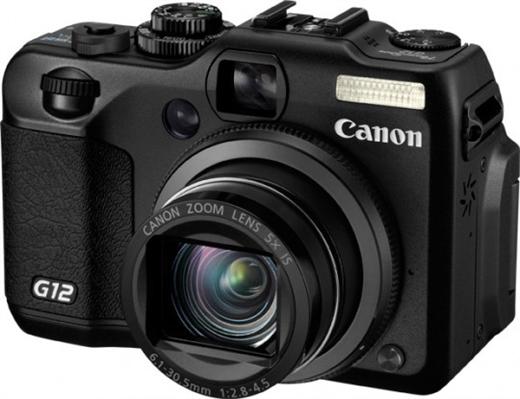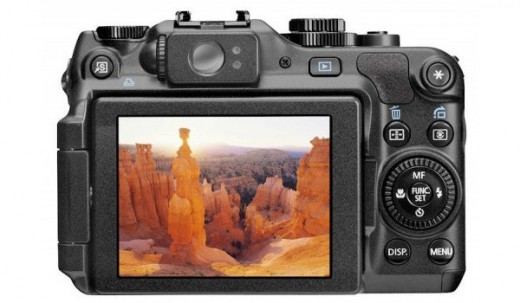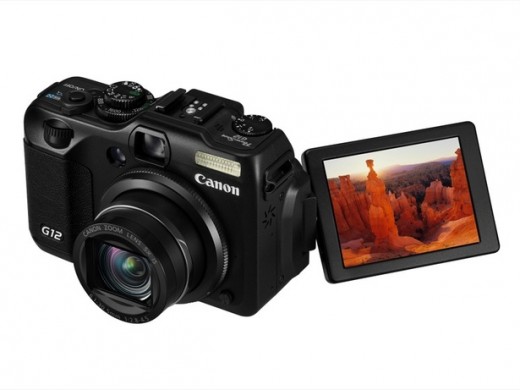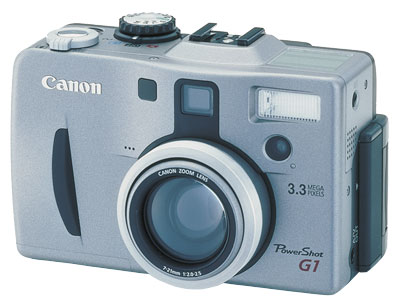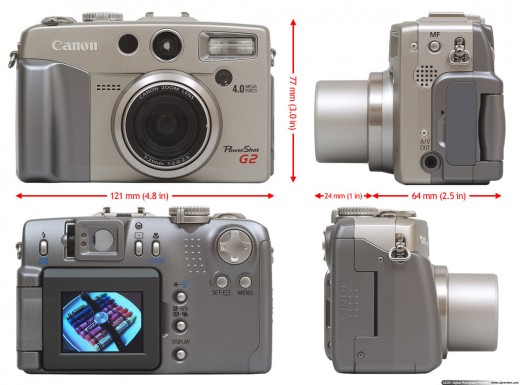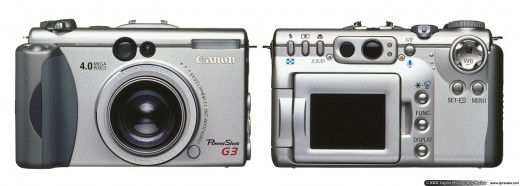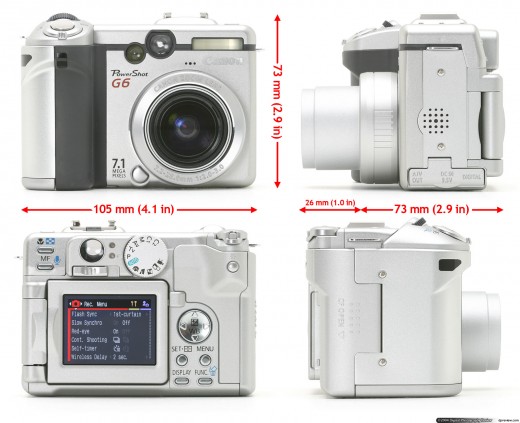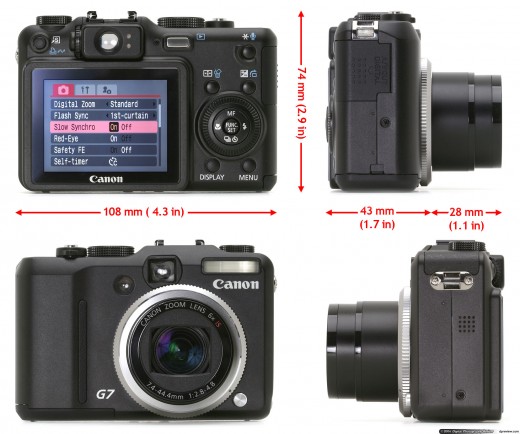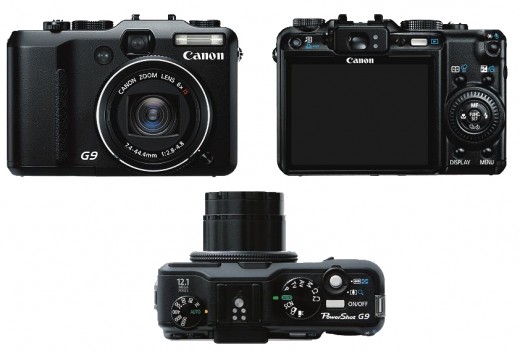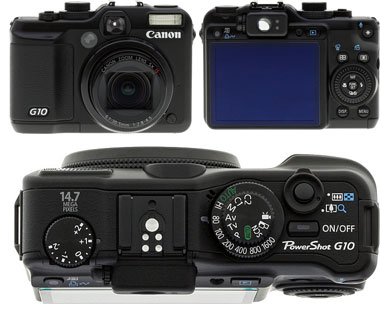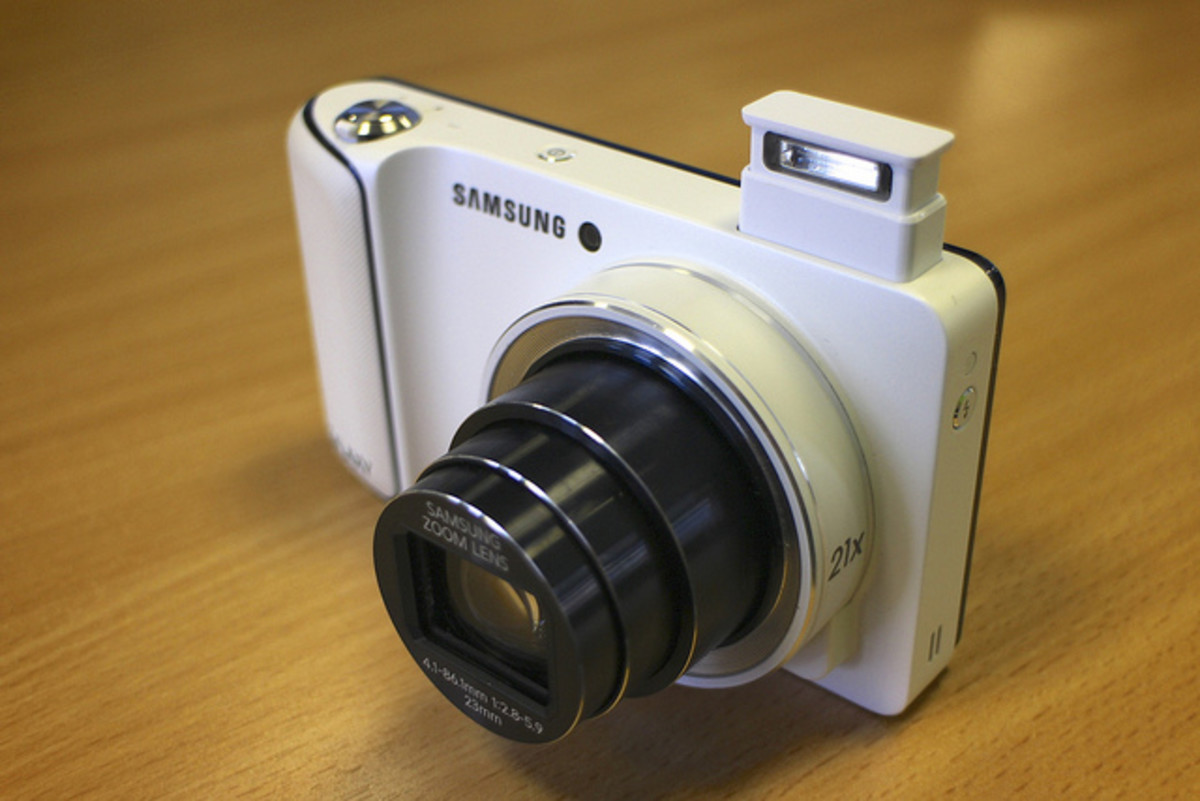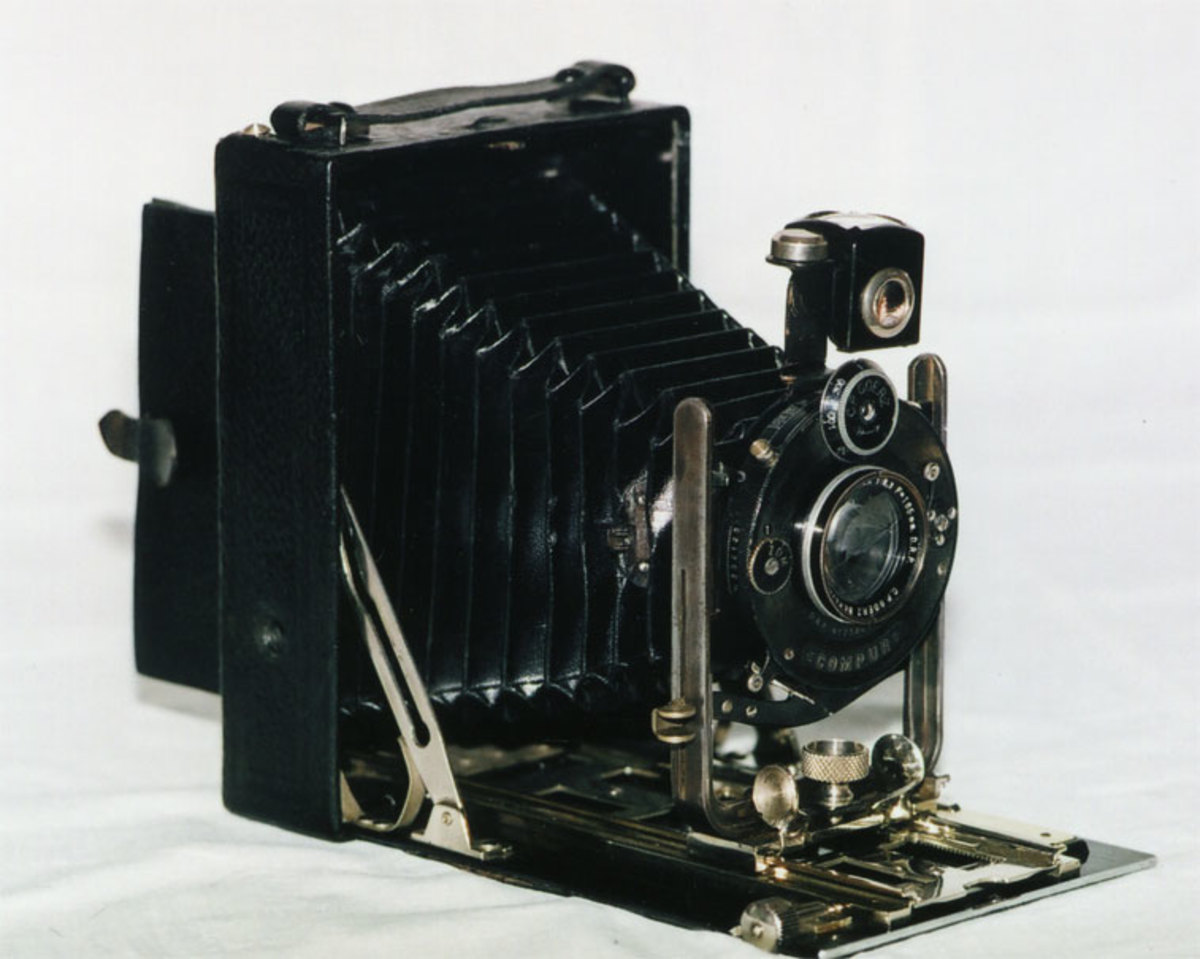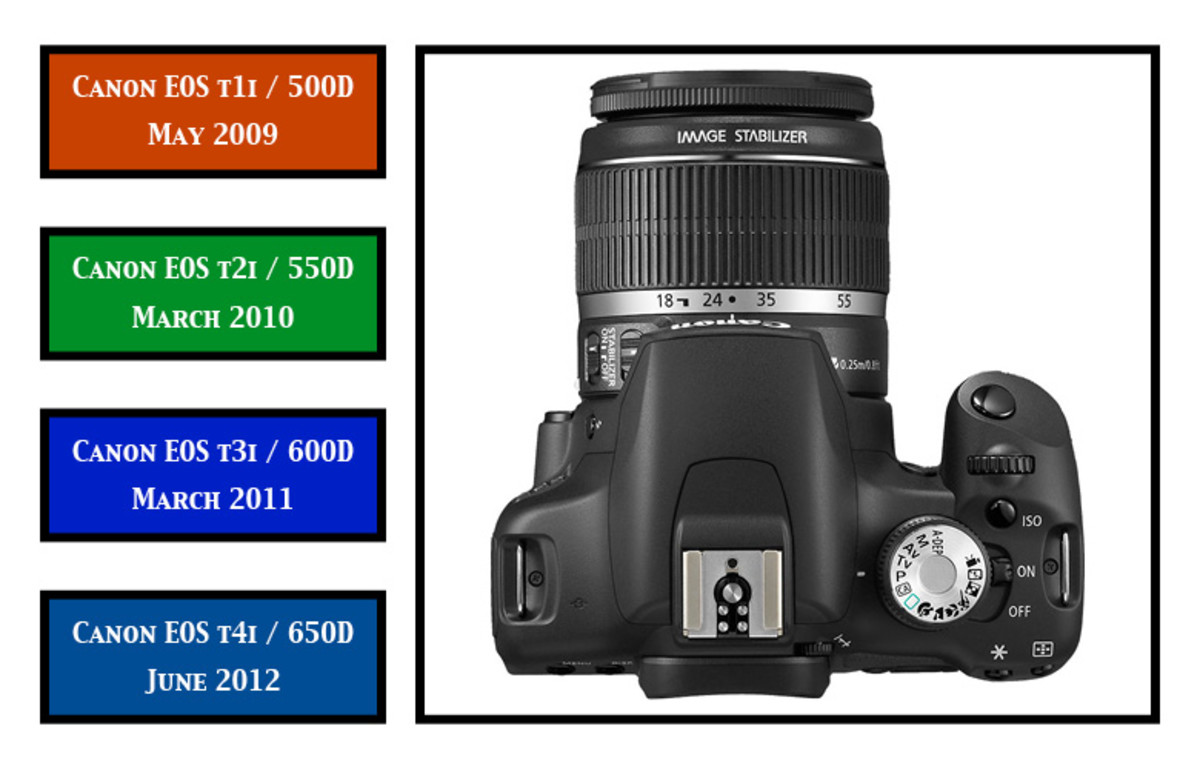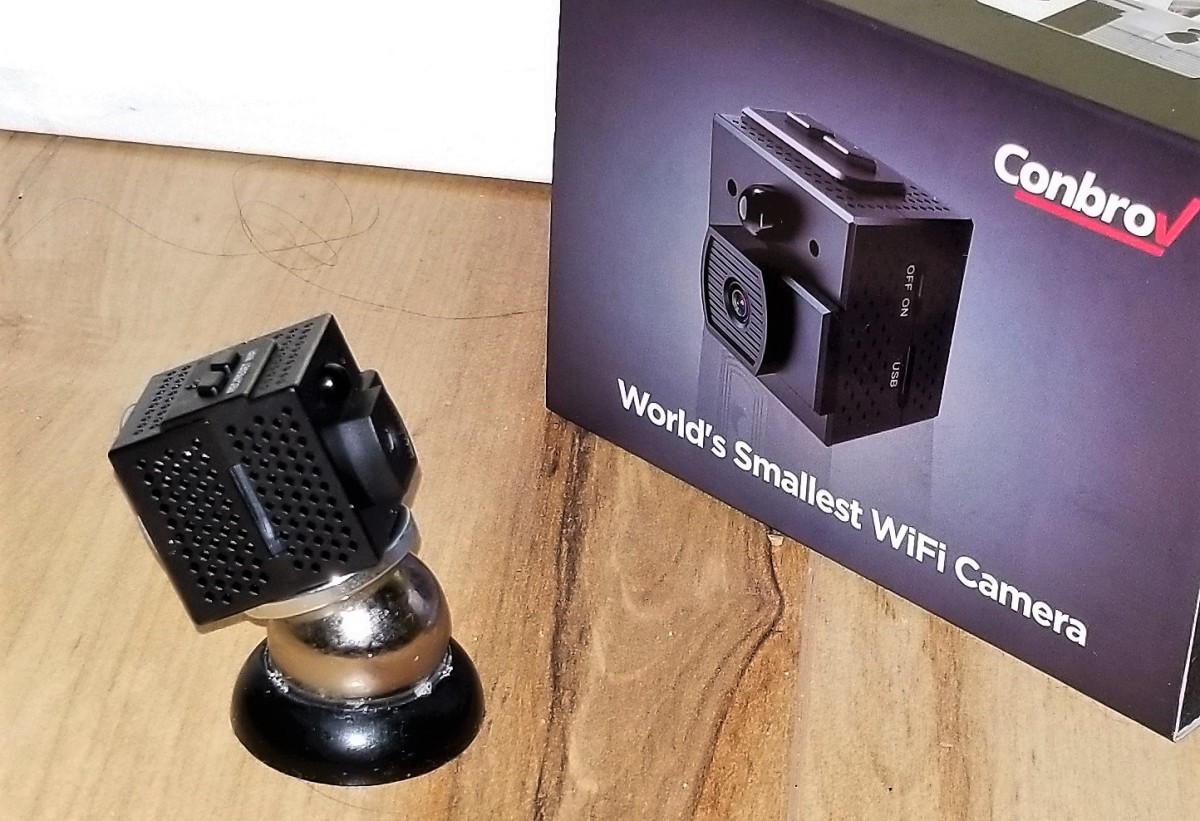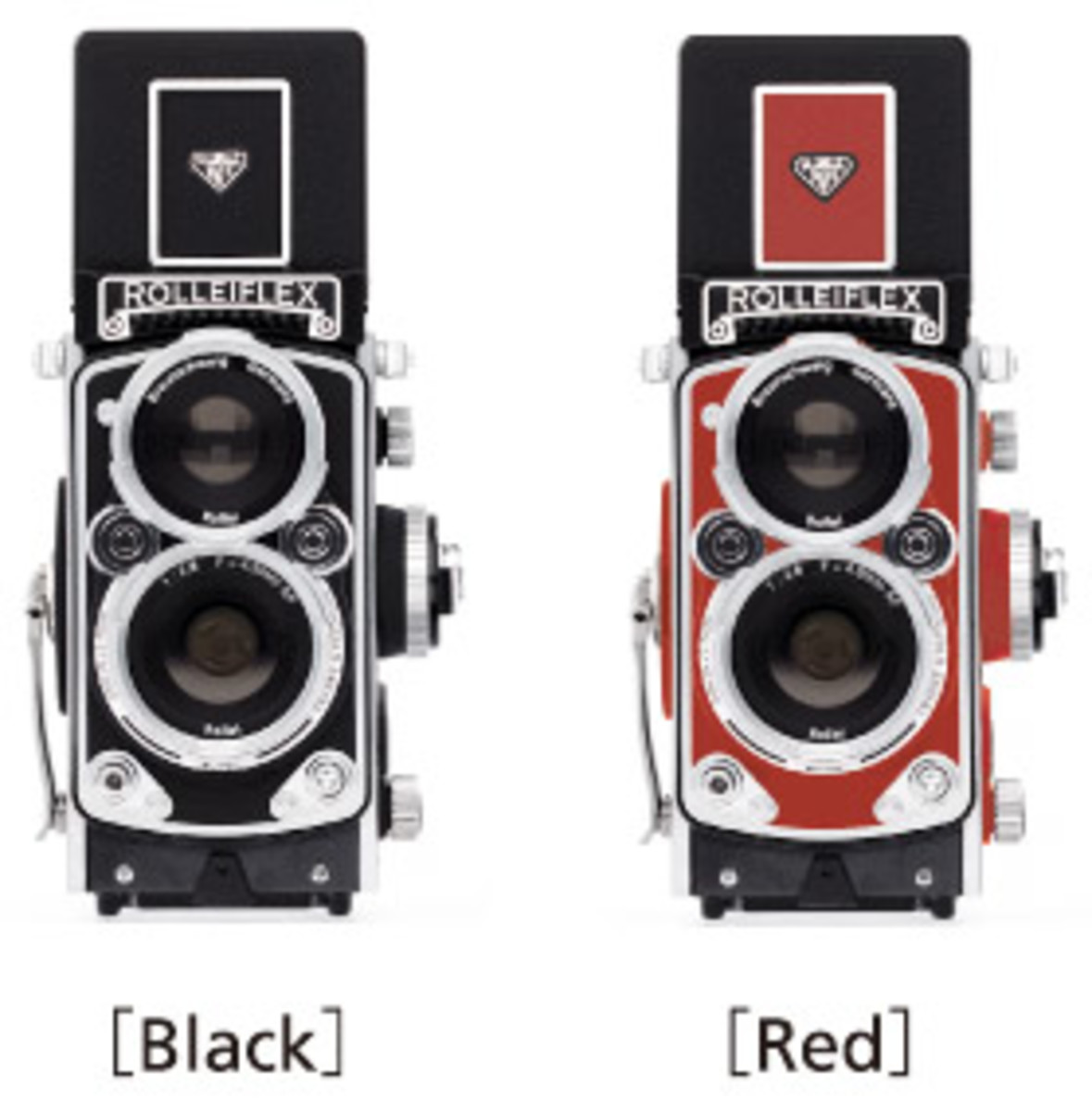- HubPages»
- Technology»
- Consumer Electronics & Personal Gadgets»
- Portable Electronics»
- Digital Cameras
Best Digital Cameras - Canon Power Shot - Canon PowerShot G12 Review
Power Shot G12 Review
The Canon PowerShot G12 is a small and light camera with such characteristics (options and features) that make it the best digital camera available. It`s even capable of disgracing some reflex cameras.
With less than 5 inches thick and about 10 inches wide, this little Canon fits in many pockets and occupies almost no space in a backpack. It is therefore a compact digital camera.
But unlike the vast majority of machines with identical size, this machine is not a "point and shoot" camera. Quite the contrary - the five commanding wheels available to control the large number of photographic options and the advanced optical viewfinder clearly show that Canon is designed for those who see photography as a hobby to take seriously.



More Control
The PowerShot G always have been good examples of cameras on the prosumer market (professional + consumer) directed for amateur users looking for cameras with sophisticated high manual control.
Physically, the big difference between the G12 and the G11 is the addition of one rotary wheel located on the handgrip. After this upgrade, all of those who want to take full control of their photography must be thanking Canon.
The mentioned wheel is in a better position than the wheel on the back of the camera. Being easier to change the values of aperture priority and speed priority modes.
In the full manual mode the photographer can change the shutter speed and aperture using the independent wheels.
Never change a winning team
Canon hardly could have done a better ergonomic design. However, it isn`t perfect yet as some problems still remain.
The display is far from accurate and it's annoying to see a little of the objective through the viewfinder when shooting with minimum zoom. It is better to have an optical viewfinder with limitations than none at all - the LCD screens (as good as they are) still fail under bright sunshine and are real battery hogs.
Still the best
It was a good decision from Canon to keep the same sensor/lens/processor trio as they`re the most important elements to define the image quality of a camera.
The sensor remains the 1/1,7-inch CCD with 10 effective megapixels. It is without doubt one of the best sensors of this type available in the photographic market. The image quality is impressive because noise only becomes evident at ISO 1600 values. Therefor it`s possible to shoot in relatively dark environments without using the flash.
The processor is also the same as in the previous model (Digic 4) while there have been improvements with the software executed by this chip. In fact, JPEG files are very good and perhaps even better than the RAM files in low light conditions (high ISO). In other circumstances the extra detail of RAM becomes evident.
In spite of the very high quality images produced by Canon if we consider the universe of compact perhaps it was time for Canon to increase the size of the sensor or even its type (go to CMOS technology).
The 5x zoom lens is versatile enough but again we would like to see improvement in the form of a larger wide angle lens. The minimum zoom equivalent to 28 mm is satisfactory but there are other compact cameras on the market able to "catch" more image.
Video
The video quality at 720p (24 fps) is very satisfactory. But don`t make the G12 a hybrid camera that can replace a real video camera.
Besides, it seems that the HD video function was added to the camera like something forced and not the result of an integrated development.
Much better are the creative modes, especially the new pre-programmed scenes:
- HDR (for reasons with a high contrast where an image is created from photos with different exposure levels in order to correct light levels throughout the image);
- Nostalgic (pictures look aged);
- Superhighway (greater vividness and color saturation) and poster effect.
In fact, good auto modes and scene presets provide good pictures in almost any situation.
Canon PowerShot G12 Evaluation Chart
Score values from 0 to 10
| |
|---|---|
Performance
| 9
|
Features
| 9
|
Money
| 8
|
Global
| 9
|
Canon PowerShot G12 Review








Canon PowerShot G family
To better understand why the Canon Powershot G12 is the best digital camera it`s essential to know its ancestors and its evolutions.
It all started in 2000 with the PowerShot G1 release:
Canon PowerShot G9
Older Versions
Powershot G1
Inaugurated the Canon PowerShot G series. Its swivel screen and a bright lens made the difference back when it was released.
It has a 3.1 MP sensor, 34-102mm (3x) f/2.0-f/2.5 lens, no stabilizer, ISO 50-400, CF memory and a 1.8" rotary display.
Powershot G3
After the Powershot G2 which added little to the G1, the G3 includes an longer optical group.
Release in 2001, the Powershot G3 came with a 4 MP sensor, 35-140mm (4x) f/2.0-f/3.0 lens, no stabilizer, ISO 50-400, CF memory and a 1.8" rotary display.
Powershot G6
The resolution has increased in this model and it became more compact and ergonomic. The last Powershot G with CF memory. It was released in 2004 and came with a 7.1 MP sensor, 35-140mm (4x) f/2.0-f/3.0 lens, no stabilizer, ISO 50-400, CF memory and a 1.8" rotary display.
Powershot G7
Released in 2006 the G7 was a camera full of innovations like stabilized lens, extended ISO (ISO 50-1600), SD memory card slot (SD/SDHC), 10 MP sensor, 35-210mm (6x) f/2.8 lens, with stabilizer but it loses the swivel screen (2.5" fixed display).
Powershot G9
The return of RAM to the G Series happened in 2008. The G9 includes for the first time a 3-inch fixed screen. Feature a 12.1 MP sensor, 35-210mm (6x) f/2.8-4.8 lens, with stabilizer, ISO 50-1600 and SD/SDHC memory.
Powershot G10
The highest resolution sensor in the history of the series G before 2006. This sensor was abandoned with the Powershot G11 - 14.7 MP sensor. It also feature 28-140mm f/2.8-f/4.5 lens, Zoom with stabilizer, ISO 80-1600, 3" shutter Screen and SD/SDHC memory.

